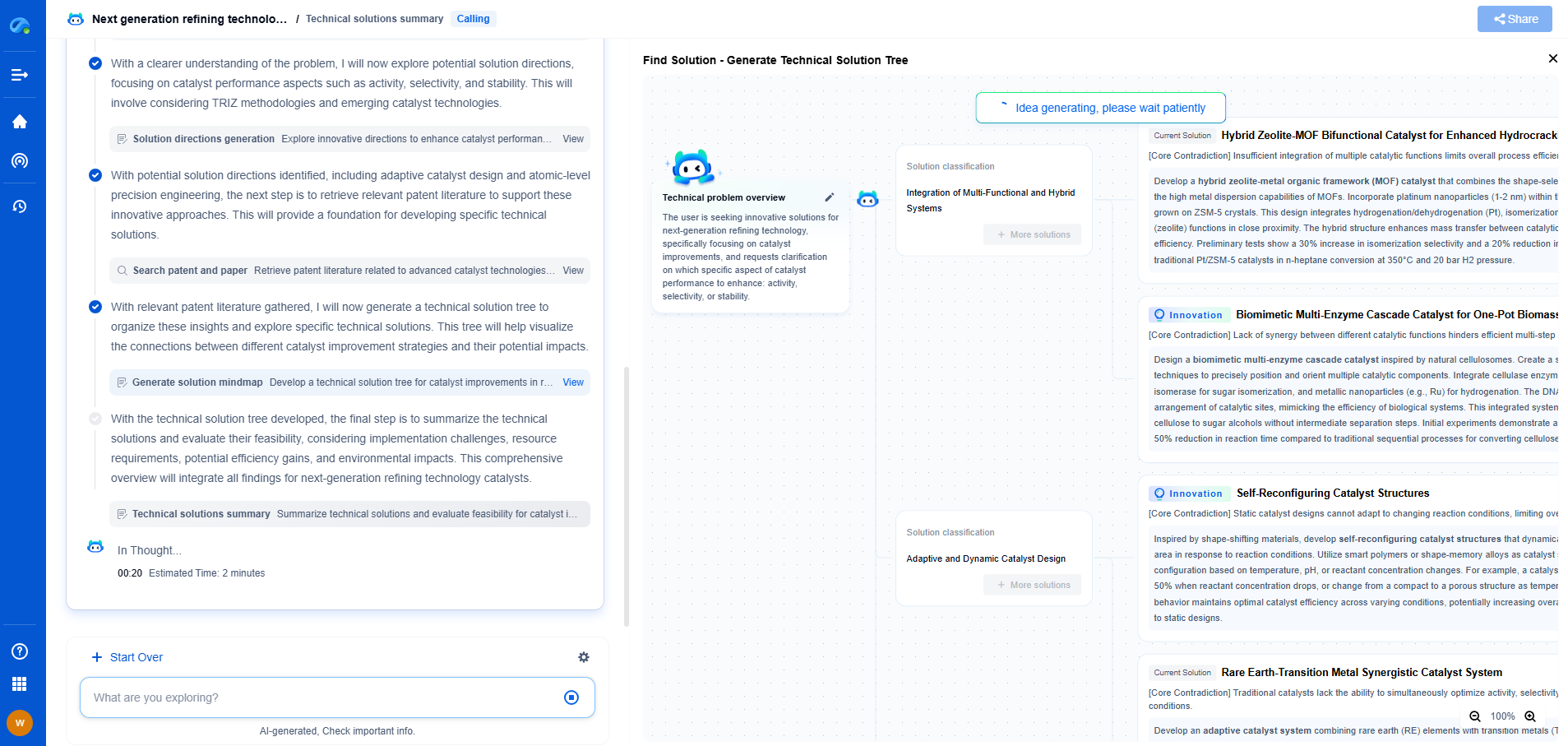UV-Vis-NIR Spectrophotometers Explained: From Single Beam to Dual Beam Designs
JUL 15, 2025 |
UV-Vis-NIR spectrophotometry is a powerful analytical technique utilized to measure the absorption, reflection, and transmission of light within the ultraviolet (UV), visible (Vis), and near-infrared (NIR) regions of the electromagnetic spectrum. This technique is widely used across various scientific disciplines, including chemistry, biology, physics, and materials science, to analyze the composition and concentration of substances. At the heart of this technology lies the spectrophotometer, an instrument that has seen significant advancements over the years. This blog will explore the evolution from single beam to dual beam designs in spectrophotometers, highlighting their fundamental differences, advantages, and applications.
Understanding Single Beam Spectrophotometers
The single beam spectrophotometer is the simplest form of spectrophotometric device. In this design, light passes through a monochromator, which isolates a specific wavelength, before it travels through the sample. The intensity of the transmitted light is then measured by a detector. Single beam spectrophotometers are known for their straightforward operation, making them ideal for basic laboratory applications.
However, single beam designs have inherent limitations. They require manual adjustment to calibrate the instrument with a blank or reference sample, which can be time-consuming and prone to errors. Variations in light source intensity, detector sensitivity, and sample conditions between measurements can affect accuracy and reproducibility.
The Emergence of Dual Beam Spectrophotometers
To address the limitations of single beam designs, dual beam spectrophotometers were developed. In dual beam spectrophotometers, light is split into two paths: one passing through the sample and the other through a reference or blank. This simultaneous measurement allows for automatic correction of any fluctuations in the light source or detector, significantly improving accuracy and consistency.
Dual beam spectrophotometers have become the industry standard due to their reliability and precision. They allow for real-time comparison between the sample and reference signals, eliminating the need for frequent recalibration and reducing the potential for human error. This makes them particularly useful in environments where high throughput and detailed analysis are required.
Comparing Single Beam and Dual Beam Designs
When choosing between single beam and dual beam spectrophotometers, several factors should be considered. Single beam systems are generally less expensive and easier to maintain, making them suitable for educational purposes or settings with limited resources. For researchers and industries that demand high precision and reproducibility, dual beam spectrophotometers are the preferred choice.
It's important to note that both types of spectrophotometers can provide valuable data, but the complexity and accuracy requirements of the analysis should guide the selection of the appropriate instrument.
Applications of UV-Vis-NIR Spectrophotometry
The versatility of UV-Vis-NIR spectrophotometry makes it indispensable in many fields. In pharmaceuticals, it is used to quantify drug concentrations and ensure quality control. Environmental scientists employ it to monitor pollutants and water quality. In the food industry, it helps in assessing color, authenticity, and concentration of various compounds. Furthermore, in materials science, it aids in characterizing optical properties and structural analysis of new materials.
Future Trends and Innovations
The field of spectrophotometry continues to evolve, with advancements in technology leading to more sophisticated and user-friendly designs. Recent innovations include miniaturized spectrophotometers that offer portability without sacrificing performance, and integration with digital interfaces for enhanced data management and analysis. As technology continues to advance, spectrophotometry is expected to become even more integral to scientific research and industrial applications.
Conclusion
Understanding the differences between single beam and dual beam spectrophotometers is crucial for selecting the right tool for specific analytical needs. While both designs have their own sets of advantages and limitations, the choice ultimately depends on the accuracy, precision, and logistical requirements of the analysis at hand. As UV-Vis-NIR spectrophotometry continues to advance, its scope and impact on science and industry are set to grow, providing deeper insights and aiding in the development of innovative solutions across a range of applications.
From interferometers and spectroradiometers to laser displacement sensors and fiber optic probes, the field of optical measurement is evolving at light speed—driven by innovations in photonics, MEMS integration, and AI-enhanced signal processing.
With Patsnap Eureka, biomedical innovators can navigate cross-domain insights in optics, electronics, and biocompatible materials, while discovering IP trends across academic, clinical, and commercial datasets.
💡 Fuel your next breakthrough in optical health tech—start using Patsnap Eureka to unlock deep insights today.
- R&D
- Intellectual Property
- Life Sciences
- Materials
- Tech Scout
- Unparalleled Data Quality
- Higher Quality Content
- 60% Fewer Hallucinations
Browse by: Latest US Patents, China's latest patents, Technical Efficacy Thesaurus, Application Domain, Technology Topic, Popular Technical Reports.
© 2025 PatSnap. All rights reserved.Legal|Privacy policy|Modern Slavery Act Transparency Statement|Sitemap|About US| Contact US: help@patsnap.com

